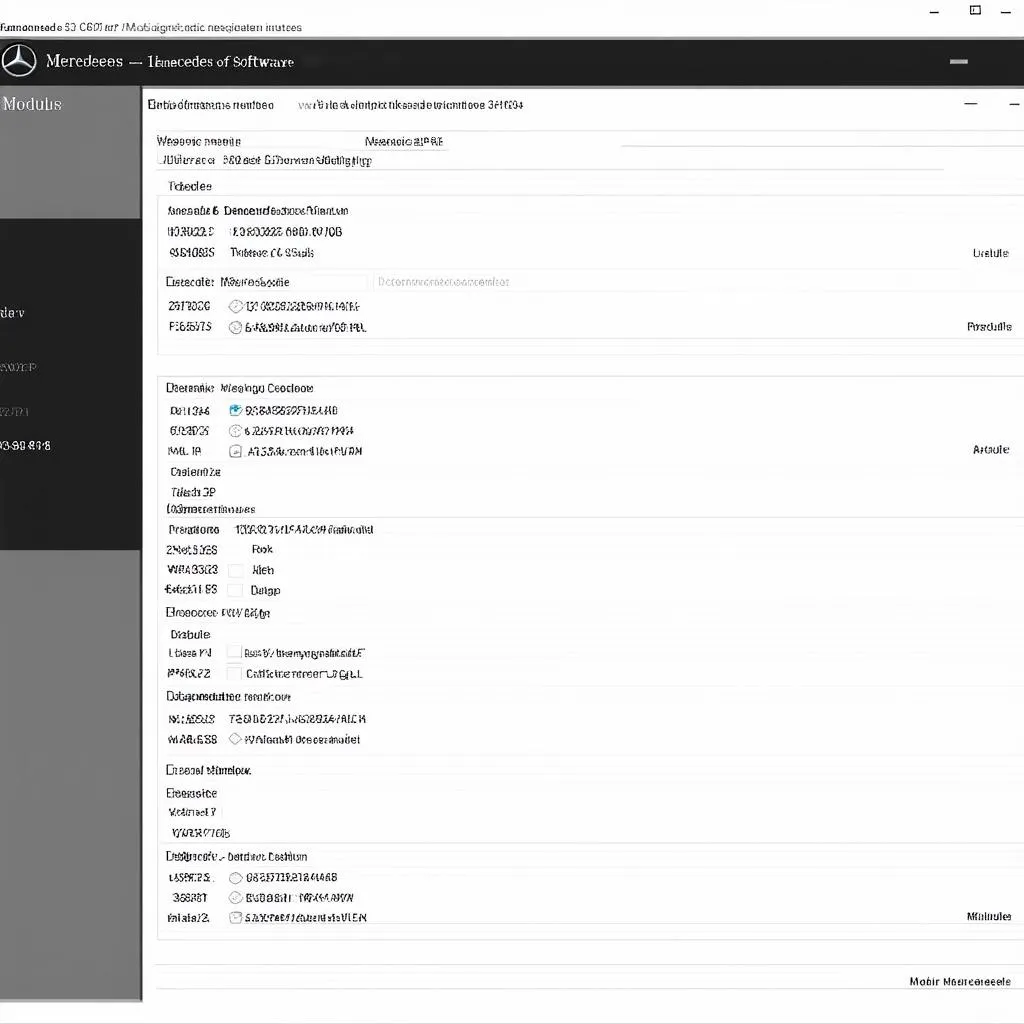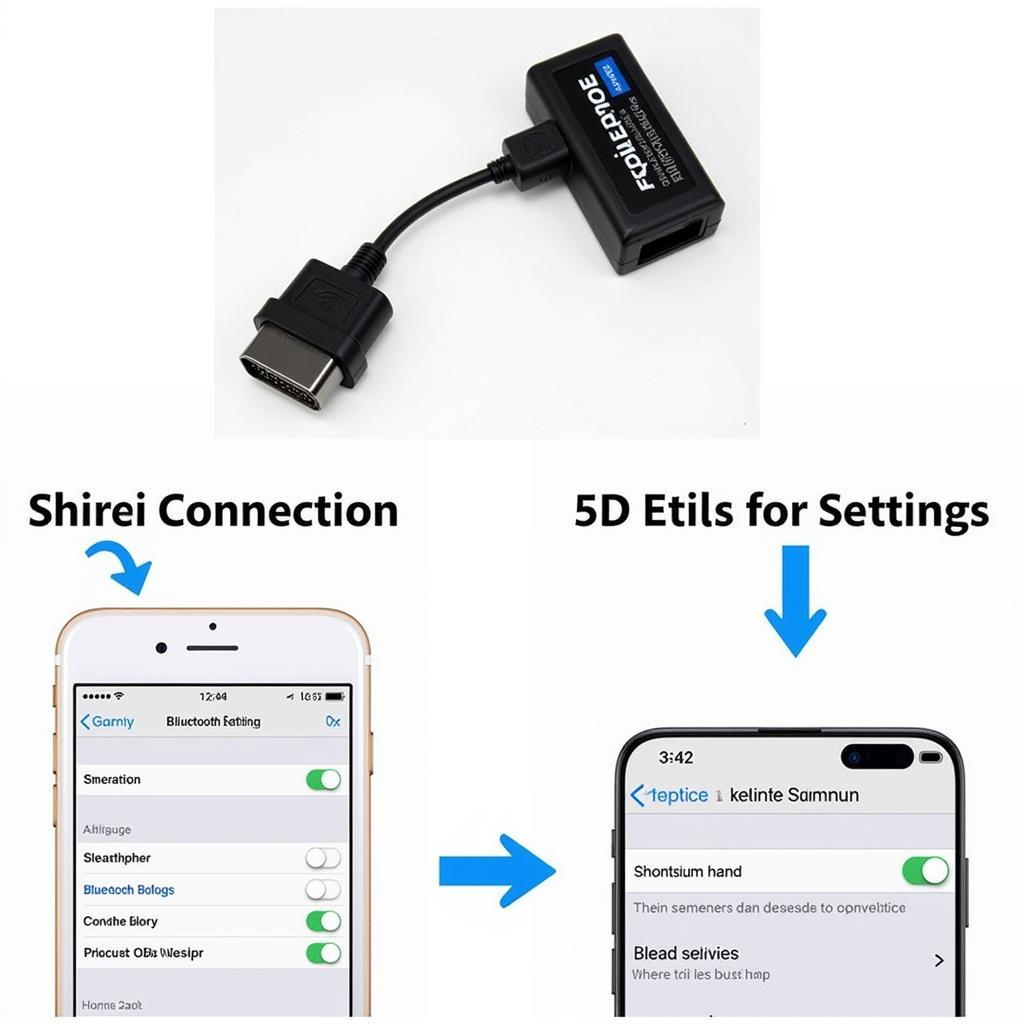Are your brake lights acting up on your 1998 Mercedes Benz E320? It’s a common problem, but luckily, often a simple fix. A faulty brake light connector is frequently the culprit behind this issue. This comprehensive guide will walk you through diagnosing and repairing your Mercedes Benz E320’s brake light connector, getting you back on the road safely.
Understanding the Problem: Why is My Brake Light Connector Faulty?
Your E320’s brake light connector, like any electrical component, is prone to wear and tear. Exposure to heat, moisture, and vibrations can corrode the connector or loosen the wiring, leading to a faulty connection. This can manifest in several ways:
- One or more brake lights are completely out: This is a major safety concern as it significantly reduces your vehicle’s visibility to other drivers.
- Dim brake lights: A weak connection can result in the brake lights being dimmer than usual.
- Flickering brake lights: A loose connection can cause the lights to flicker or cut out intermittently.
brake-light-symptoms|brake light problems|A car with one brake light out, one dim brake light, and one flickering brake light.
Identifying the Culprit: Is it Really the Connector?
Before you break out the toolbox, it’s crucial to confirm that the brake light connector is the problem, not a blown fuse or bulb. Here’s a quick checklist:
- Check the Bulbs: Start with the simplest solution. Inspect your brake light bulbs for any signs of damage or burning.
- Inspect the Fuses: Locate your E320’s fuse box (refer to your owner’s manual for its location) and check the brake light fuse. A blown fuse will need replacing.
- Examine the Connector: If the bulbs and fuses are fine, visually inspect the brake light connector. Look for any signs of corrosion, damage, or loose wires.
car-brake-light-connector|corroded brake light connector|Close-up image of a corroded car brake light connector with visible damage and dirt.
Gearing Up for the Fix: Tools and Materials You’ll Need
Fixing the brake light connector is a straightforward task, and you’ll need a few basic tools:
- Socket Set: To access the tail light assembly.
- Screwdrivers: A Phillips and a flathead screwdriver should suffice.
- Electrical Contact Cleaner: To clean any corrosion on the connector.
- Dielectric Grease: To protect the connection from future corrosion.
- Replacement Connector: Optional, if the existing connector is beyond repair.
Repairing the Brake Light Connector: A Step-by-Step Guide
Once you have the necessary tools and materials, you can begin the repair:
- Disconnect the Battery: Safety first! Disconnect the negative terminal of your car battery to avoid any electrical mishaps.
- Access the Connector: Open the trunk and locate the tail light assembly behind the bulb. You’ll need to remove a few screws or clips to access the back of the assembly.
- Inspect and Clean: Carefully unplug the brake light connector. Examine it closely for any damage or corrosion. Use electrical contact cleaner and a small brush to clean the connector terminals.
- Repair or Replace: If the connector is damaged, it’s best to replace it with a new one. If it’s simply corroded, thoroughly clean it and apply dielectric grease to the terminals to prevent future corrosion.
- Reconnect and Test: Plug the connector back in securely, reattach the tail light assembly, and reconnect the battery. Turn on your car and test the brake lights to ensure they are working correctly.
cleaning-brake-light-connector|cleaning brake light connector|A person using a small brush and electrical contact cleaner to clean the terminals of a car brake light connector.
FAQs: Answering Your Common Questions
Q: Can I drive with a faulty brake light connector?
A: It’s strongly advised against driving with faulty brake lights. This poses a significant safety risk as it makes your car less visible to others, increasing the risk of an accident.
Q: Are aftermarket brake light connectors reliable?
A: Yes, many reputable brands produce high-quality aftermarket connectors that are as good as OEM parts. Ensure you choose a connector specifically designed for your E320’s model year.
Q: Can a faulty brake light connector drain my car battery?
A: While a faulty connector itself won’t drain your battery, a short circuit caused by the faulty connection could potentially lead to battery drain.
Q: Can diagnostic software help pinpoint the issue?
A: While not all brake light issues will trigger error codes, using an OBD-II scanner like those offered by CARDIAGTECH can sometimes help identify electrical problems within the system, giving you a starting point for diagnosis.
Conclusion: Keep Your Mercedes E320 Safe and Roadworthy
Fixing a brake light connector on your 1998 Mercedes E320 is a manageable DIY project for most car owners. By following this guide, you can save time and money by tackling the repair yourself. Remember, maintaining your vehicle’s safety features is paramount. If you’re unsure about any step of the process, don’t hesitate to consult a qualified mechanic.


